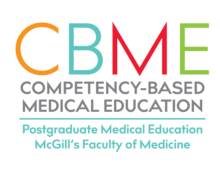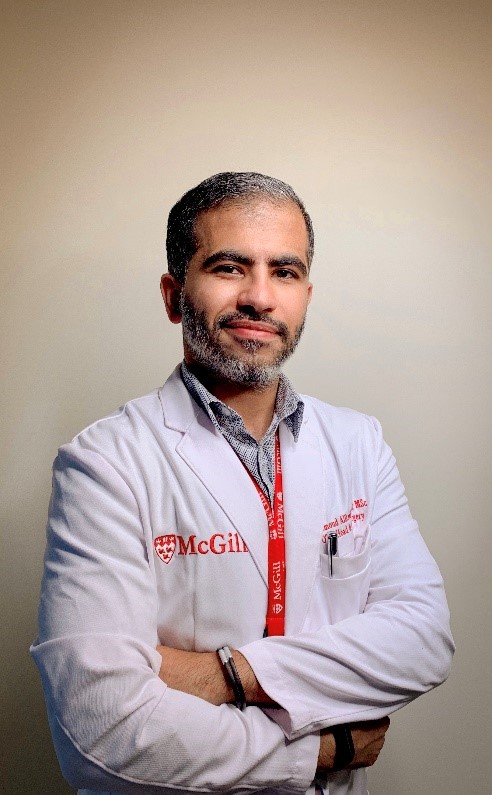
By Caroline Phaneuf and Lisa Dutton
At McGill University and across Canada, Postgraduate Medical Education (PGME) Programs are transitioning to competency-based medical education (CBME). CBME is a new way of training and assessing residents. Frequent observations and assessments will provide a comprehensive picture of each resident’s skills and knowledge acquisition and will inform decisions for promotion to the next stage of training. The overarching goal of CBME is to enhance postgraduate medical education, ensuring that after completing their training, physicians are ready for independent practice.
All of McGill’s 70 accredited PGME residency programs are expected to implement CBME by 2022.
We spoke with two PGY2 residents to obtain their perspective and advice about CBME: Dr. Mahmoud Alreefi, Otolaryngology and Dr. Olivier Fortin, Pediatric Neurology.

You are a resident in Otolaryngology, a program that has been using the CBME curriculum for two years. How has it been?
MAHMOUD ALREEFI: It’s been really good. There have been some ups and downs, but overall the experience has been very helpful. The cornerstones of CBME, entrustable professional activities (EPAs) and milestones, outline the skills we need to gain competency during each phase of residency. The EPAs also outline the precise steps we need to follow to ensure our competency. It has made the learning experience easier.
CBME is still new but a number of improvements have been made since its launch. Do residents feel there have been improvements?
OLIVIER FORTIN: From my conversations and meetings, as well as a survey done by the Fédération des médecins résidents du Québec, although challenges remain, several components of the CBME process have improved, often based on residents’ suggestions. For example, programs that started with a large number of EPAs, such as anesthesiology, have reduced their number of EPAs, which has made things a lot easier. Faculty and residents are also getting more and more familiar with CBME. Residents report they receive more feedback, get more on-the-ground assessments, and are less anxious in their second year of residency.
What kind of advice would you give residents starting the CBME curriculum?
OLIVIER FORTIN: First, know that CBME is made for residents. Go in with a positive outlook and make sure you know what CBME is and how it works in practice. Second, don’t be overly anxious about your EPA assessments. CBME shouldn’t become a burden and a big checklist. Third, take charge of your assessments. Understand where you’re going and think about what kind of learning you’re getting from each encounter. You also have to show openness to feedback.
MAHMOUD ALREEFI: Number 1: Read the EPAs and understand them. Number 2: There will always be some observers who are better than others. You’ll notice that some observers are stronger at assessing certain EPAs. Find out which observer you should ask to assess you on which skill. Number 3: Always ask for feedback, regardless of whether it’s an EPA or not. There’s no such thing as “bad feedback” and all feedback can help you improve.
What should programs be doing to help residents understand CBME?
OLIVIER FORTIN: Make sure you cover CBME well in training before residency starts. Surgical Foundations program did it well: during their month of boot camp, they had a few sessions on CBME. Those residents seemed to have a better understanding of CBME and were more motivated. A month-long boot camp won’t be possible for all programs, but hosting several sessions on CBME before residency starts, or at least within the first few weeks of residency, is something programs should look into. It will not only help the residents, but the faculty as well, as it will take an extra load of CBME coaching off faculty members’ shoulders.
What advice would you give faculty?
MAHMOUD ALREEFI: EPAs work perfectly when you have an observer who understands them and gives you detailed feedback. It is very helpful to me when the observer follows every step and tells me how I could do it better. That way, I can pinpoint my shortcomings and work on them. Telling me “that was good” or “that was bad” is not enough to advance my learning.
OLIVIER FORTIN: In addition to knowing the EPAs, Faculty should show that they’re open to feedback and discussions. At the beginning of each day, each week or each month, faculty could ask each resident: “What do you want to work on today/this week/this month?” Just this question would open the door to the discussions and feedback that are key to the CBME mindset.
The McGill PGME Education Team has created a variety of CBME teaching and learning materials that each program can adapt. The team has also created a series of videos that capture the experience and advice of programs that have transitioned to CBME. You can find this material on the CBME section of the PGME website.
Should you have questions at any point before or during your program’s transition to CBME, please don’t hesitate to contact the Postgraduate Medical Education Office at: pg-education.med@mcgill.ca.
November 22 2019
